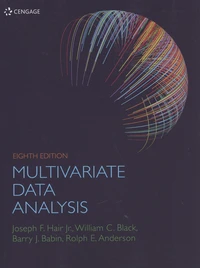An accessible, practical guide to using PLS-SEM for social sciences research. With applications using SmartPLS - the primary software used in partial least squares structural equation modeling (PLS-SEM) - this practical guide provides concise instructions on how to use this evolving statistical technique to conduct research and obtain solutions. Featuring the latest research, new examples, and expanded discussions throughout, the Second Edition is designed to be easily understood by those with limited statistical and mathematical training who want to pursue research opportunities in new ways.
New and Key Features. A new overview of the latest research on composite-based modeling (e.g., distinction between composite and causal indicators) enhances reader understanding of the conceptual foundation for PLS-SEM. A new in-depth discussion explores the various types of mediation, alternative mediation analysis procedures, mediated moderation, and moderated mediation. Coverage of several methods for constructing bootstrap confidence intervals includes percentile, studentized, bias-corrected, and accelerated, as well as two double bootstrap methods.
Simple instructions give readers the "how-tos" of using SmartPLS software to obtain solutions and prepare manuscripts using PLS-SEM for academic journal submissions. Rules of Thumb in every chapter provide guidelines on best practices in the application and interpretation of PLS-SEM.
An accessible, practical guide to using PLS-SEM for social sciences research. With applications using SmartPLS - the primary software used in partial least squares structural equation modeling (PLS-SEM) - this practical guide provides concise instructions on how to use this evolving statistical technique to conduct research and obtain solutions. Featuring the latest research, new examples, and expanded discussions throughout, the Second Edition is designed to be easily understood by those with limited statistical and mathematical training who want to pursue research opportunities in new ways.
New and Key Features. A new overview of the latest research on composite-based modeling (e.g., distinction between composite and causal indicators) enhances reader understanding of the conceptual foundation for PLS-SEM. A new in-depth discussion explores the various types of mediation, alternative mediation analysis procedures, mediated moderation, and moderated mediation. Coverage of several methods for constructing bootstrap confidence intervals includes percentile, studentized, bias-corrected, and accelerated, as well as two double bootstrap methods.
Simple instructions give readers the "how-tos" of using SmartPLS software to obtain solutions and prepare manuscripts using PLS-SEM for academic journal submissions. Rules of Thumb in every chapter provide guidelines on best practices in the application and interpretation of PLS-SEM.
